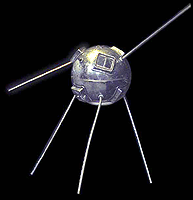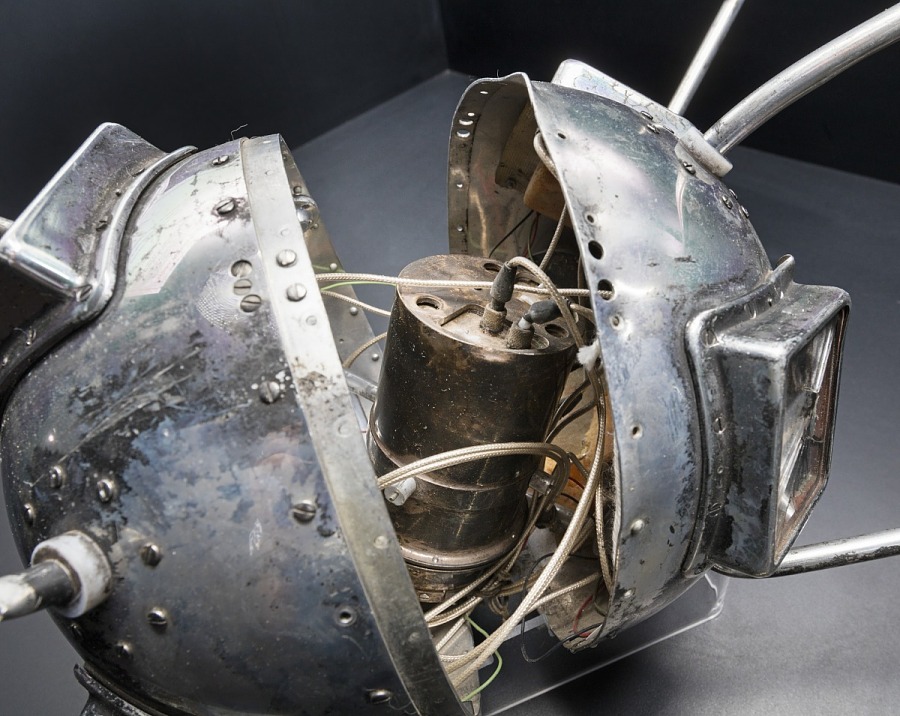The Space Race between the United States and the Soviet Union was one of the most intense scientific and technological rivalries in history. In the wake of the Soviet Union’s successful launch of Sputnik 1 in October 1957, the United States rushed to launch its first satellite, hoping to assert its dominance in space exploration. However, this attempt—known as Vanguard TV3—ended in disaster, with the rocket exploding seconds after liftoff in front of a global audience.
Despite its failure, Vanguard TV3 played a crucial role in shaping the future of American space exploration, leading to the development of more reliable rockets and the eventual success of the Explorer 1 mission. In this article, Spaceyv explores the story of Vanguard TV3, its significance, and how it contributed to the broader history of space exploration.
The Birth of Project Vanguard
After World War II, the United States and the Soviet Union engaged in a fierce technological competition, known as the Cold War. Space became the new battleground when, on October 4, 1957, the Soviet Union launched Sputnik 1, the first artificial satellite. This event shocked the United States, leading to public outcry and fears that the USSR was gaining a strategic advantage in missile technology.
In response, the United States accelerated its efforts to launch a satellite under Project Vanguard, a program led by the Naval Research Laboratory (NRL). Unlike other military-led projects, Vanguard was intended to be a civilian-led scientific effort, showcasing American technological superiority without relying on military hardware.
The centerpiece of Project Vanguard was the Vanguard rocket, a three-stage vehicle designed to carry small satellites into orbit. Vanguard TV3 (Test Vehicle 3) was supposed to be the United States’ first successful satellite launch, but history had other plans.
The Vanguard TV3 Disaster: A Mission That Lasted Seconds
On December 6, 1957, the world eagerly watched as Vanguard TV3 stood on the launch pad at Cape Canaveral, Florida. The small satellite, weighing just 1.47 kg (3.25 lbs), was meant to transmit radio signals and provide valuable scientific data.
As the countdown reached zero, the Vanguard rocket ignited, lifting just four feet off the ground before suddenly losing thrust. In a catastrophic failure, the rocket fell back onto the launch pad and exploded, engulfing the entire area in flames.

What Went Wrong?
Several factors contributed to the Vanguard TV3 disaster:
-
Engine Failure: The first-stage rocket lost thrust just two seconds after ignition, leading to the collapse.
-
Structural Weakness: The lightweight rocket design may have been too fragile for a smooth launch.
-
Rushed Development: With intense political pressure, the project was fast-tracked, leading to inadequate testing.
The launch failure was broadcast on live television, making it a humiliating moment for the United States. Newspapers around the world mocked the failure, calling the satellite “Flopnik,” “Kaputnik,” and “Stayputnik.”
The Aftermath: How Vanguard TV3 Changed Space Exploration
Although Vanguard TV3 was a disaster, it led to several important developments:
1. The Birth of Explorer 1
The Vanguard failure prompted the United States to shift focus to an alternative satellite program led by Dr. Wernher von Braun and the Army Ballistic Missile Agency (ABMA). Less than two months later, on January 31, 1958, the United States successfully launched Explorer 1, its first satellite, using a modified Juno I rocket.
2. The Creation of NASA
The failure of Vanguard TV3 contributed to the realization that the United States needed a centralized space agency. In July 1958, President Dwight D. Eisenhower signed the National Aeronautics and Space Act, creating NASA.
3. Vanguard’s Redemption
Despite the failure of TV3, Project Vanguard was not abandoned. On March 17, 1958, the Vanguard 1 satellite was successfully launched, becoming the second U.S. satellite in space. Incredibly, Vanguard 1 remains the oldest human-made satellite still in orbit today.

Lessons from Vanguard TV3: Why Failures Matter in Science
While the Vanguard TV3 explosion was a major setback, failures are a crucial part of progress in space exploration. Every unsuccessful mission provides valuable data that helps scientists and engineers improve technology, prevent future failures, and push the boundaries of human knowledge.
Key Lessons from Vanguard TV3:
-
Failure is Part of Innovation – Every major space program, including NASA’s Apollo program and SpaceX, has experienced catastrophic failures.
-
Scientific Perseverance Pays Off – Despite initial failures, the U.S. successfully launched Explorer 1 and continued to advance space technology.
-
Public Perception Matters – The U.S. learned that media coverage of space exploration can greatly influence public support and government funding.
Vanguard TV3 and the Future of Space Exploration
Today, failures like Vanguard TV3 serve as historical reminders of how far space technology has come. Modern space programs, including NASA, SpaceX, and Blue Origin, continue to push the limits of what is possible, learning from past mistakes.
Elon Musk, founder of SpaceX, has often referenced the importance of failure in rocket development. SpaceX’s Starship program, which aims to take humans to Mars, has seen its own share of explosions—similar to Vanguard TV3. However, these failures pave the way for future success.
Would Vanguard TV3 Have Succeeded Today?
With today’s advanced AI-driven simulations, machine learning, and improved rocket materials, it is likely that Vanguard TV3 would have succeeded if it were launched in modern times. However, at the dawn of the Space Age, the trial-and-error approach was the only way to advance.
Conclusion: A Failure That Shaped the Future
The Vanguard TV3 disaster may have been an embarrassing moment for the United States, but it played a crucial role in the development of NASA, modern space exploration, and rocket engineering. It also serves as a reminder that failure is a necessary step toward progress.
At Spacyv, we believe that every failure in science and technology is an opportunity to learn and improve. Just as Vanguard TV3 helped pave the way for the Apollo moon landings, Mars rovers, and modern space exploration, the failures of today will shape the future of humanity in space.
Would you consider the Vanguard TV3 explosion a necessary failure for space progress, or could it have been avoided? Let us know your thoughts in the comments!
References & Further Reading
Launius, Roger D. NASA: A History of the U.S. Civil Space Program. Palgrave Macmillan, 2018.
National Aeronautics and Space Administration (NASA) – Official history of Project Vanguard.
Smithsonian National Air and Space Museum – Vanguard TV3 artifacts and analysis.
“The History of Project Vanguard” – U.S. Naval Research Laboratory Report, 1960.


